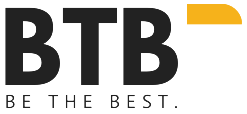Fusion Order Orchestration – The Music is Good, if you can Compose it
Continuing Farm Enterprise Use Case as in #FusionCosting, Farm Enterprise has decided to get into a new line of business – selling juicing equipment to it customers. They figure that if the customer needs Oranges, Mangoes and Apples, they might also need equipment to produce juice, so why not create another product line to generate additional revenue stream? Gary the Vice President of Sales approaches Mr. Order Manager of Farm Enterprise. Gary proposes his idea of selling juicing equipment to Mr. Order Manager. Gary wants to sell Juicing Equipment for $1000 USD. He also wants to sell Equipment Service for $200 USD. However, he wants to ship to Equipment Accessories along with the Juicing Equipment for free since these are needed to assemble the juicing equipment (just like IKEA’s assembly accessories). Gary creates his proposal in tabular format: Item Description Selling Price (USD) Shipping/Billing Instructions Juicing Equipment $1000 Ships to/Bills to Customer Equipment Service $200 Bills to Customer Equipment Accessories $0 Ships to Customer Juicing Product Line Proposal Mr. Order Manager considers the proposal and decides that he will use “User Item Type” as an attribute to drive the logic for Order Orchestration. He creates the following Order Orchestration logic in tabular format. Item Description Item Number User Item Type Juicing Equipment Widget A Finished Good Equipment Service Widget_Service Service Equipment Accessories Widget Kit Kit User item Type Logic User Item Type Shipping/Billing Instructions Orchestration Flow Orchestration Name Finished Good Ships to/Bills to Customer Schedule/Reserve/Ship/Invoice DOO_OrderFulfillmentGeneralProcess Services Bills to Customer, No Shipping Invoice DOO_BillOnlyGenericProcess Kit Ships to Customer, No Billing Schedule/Reserve/Ship CustomDOO_DOO_OrderShipOnlyBTB Fusion Order Orchestration Logic Mr. Order Manager then composes the VIB Rules in Fusion Order Management Cloud. Once the Juicing Rules are published, Mr. Order Manager wants to run a quick test to check if his Order Orchestration rules work as expected. He quickly drafts the order in Order Management Cloud and adds 3 Items to order lines: Widget A – qty 1 Widget_Service – qty 1 Widget Kit – qty 1 He then submits the orders and switches to Fulfillment View to see the Order Orchestration Flow assigned to each order line. Fusion Cloud Order Orchestration assigned 3 different Order Orchestration processes based on the different User Item Type as he had anticipated. The order orchestration assignment works as follows: Item Number Orchestration Process Name Widget A DOO_OrderFulfillmentGenericProcess Widget_Service DOO_BillOnlyGenericProcess Widget Kit CustomDOO_DOO_OrderShipProcessBTB Fusion Order Orchestration Assignment His Orchestration rules work fine. He is ecstatic and shares the news with Gary, the Vice President of Sales. Farm Enterprise is now ready to venture out into a new product line since they know that their Fusion Order Management Cloud application is very flexible and can handle most of their Use Cases.
Valuation Structure – The Magical Potion of Fusion Cloud Costing
With the advent of Oracle Fusion Costing, several new terminologies are being thrown around which, Oracle EBS Costing practitioners are trying to get their heads around. To name a few – Cost Books, Cost Organizations, Cost Profile, Valuation Structures, Valuation Units etc. Among all, Valuation Structures does stand out and which is what drives the magic in Fusion Cloud Costing. Let us delve into this and see if it is truly the magic Oracle EBS Costing practitioners were looking for? Let’s take a Use Case of Farm Enterprise. Farm Enterprise buys and sells fruits – Oranges, Mangoes & Apples. Farm Enterprise is based out of North America with their HQ in San Antonio, Texas. They have many farms, which they have designated as inventory orgs (Farm A, Farm B & Farm C) in their Fusion environment. Let us see some of the ways they are utilizing valuation structures to drive their costing needs. Enterprise Farm Enterprise Inventory Organizations Farm A Farm B Farm C Costing organization Farm Cost Org Farm Cost Org Farm Cost Org Since Farm Enterprise buys and sells several grades of fruits, they have different levels of fruits classification. They made a business decision to create a cost category for each grade to drive their costing process. Furthermore, here are some of rules business follows for Oranges: Rules for Oranges Excellent Grade has the same supplier and follows the Global Purchase Agreement and hence will Average cost PO Receipts across all inventory orgs. Regardless of which org – Farm A, Farm B or Farm C receives the PO, item costs must be driven off by averaging all POs in all orgs. Prime Grade is volatile in costing nature, it has different procurement sources and procurement costs changes from time to time, and so they need to have Actual Cost specific to individual inventory orgs. Good Grade has no consistent costing characteristics, it has 3 items under this costing category. Each follows its own costing path: Orange Good1 (Item Specific Cost Profile – Actual) Orange Good2 (Item Specific Cost Profile – Perpetual Average) Orange Good3 (Item Specific Cost Profile – Standard) Fruit Fruit Grades (Cost Category) Item Cost Method Valuation Structure Oranges Excellent Perpetual Average Cost Org Prime Actual Cost Org-Inventory Org Good Orange Good1 (Item Cost Profile) Actual Cost Org-Inventory Org Orange Good2 (Item Cost Profile) Perpetual Average Cost Org-Inventory Org Orange Good3 (Item Cost Profile) Standard Cost Org-Inventory Org Wow! So many ways an Orange can be costed in Fusion Cloud? Well the reality is different Costing Methods always existed in Oracle EBS Costing applications, however, there never was so much flexibility to drive item costs. As the example above illustrates, Farm Enterprise has all the costing tools at its disposal to cost any item, anyway they like. Bottom line, it is the introduction of the “Valuation Structure” concept the magic potion that empowers Fusion Costing Some might say, Fusion Costing has finally given costing practitioners the “Costing freedom” they were all along looking for!







